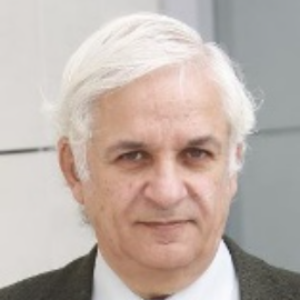Heterogeneous Catalysis
Heterogeneous catalysis is based on the ability of solid surfaces to form and break bonds with molecules from their surroundings. Heterogeneous catalysis is a broad term that refers to a variety of catalytic substances and industrial processes used to make materials, chemicals, and fuels. Because heterogeneous catalysis lies at the heart of the chemicals and energy sectors, developing active, selective, and energy efficient heterogeneous catalytic processes is critical to a sustainable future. Based on insights from fundamental investigations, the design, development, and implementation of robust and selective heterogeneous catalytic processes could have a huge positive impact on the globe. Because of its ability to accelerate a chemical reaction to equilibrium and to selectively accelerate a desirable chemical reaction in a complicated chemical reaction network to equilibrium, heterogeneous catalysis by solids plays a major role in the chemical industry. During heterogeneous catalytic reactions, at least one of the reactants adsorbs on surface of catalyst with coordination-unsaturated atoms and becomes activated, after which the adsorbed reactants undergo surface reactions to form adsorbed products, which then desorb from the catalyst surfaces to yield products.

Arthur J Nozik
University of Colorado, United States
Stanislaw Dzwigaj
Sorbonne-Universite-CNRS, France
Haibo Ge
Texas Tech University, United States
Ashanendu Mandal
University Of Calcutta, India
Victor Cerda
Sciware Systems, Spain
Tokeer Ahmad
Jamia Millia Islamia, India


Title : Application of metal Single-Site zeolite catalysts in catalysis
Stanislaw Dzwigaj, Sorbonne-Universite-CNRS, France
Title : Designing of nano-sized heterostructures for hydrogen production using overall water splitting
Tokeer Ahmad, Jamia Millia Islamia, India
Title : United Nations’ strategy responding to climate change
Dai Yeun Jeong, Asia Climate Change Education Center, Korea, Republic of
Title : Thermal and mechanical processes and reactions in reversible behavior of shape
Osman Adiguzel, Firat University, Turkey
Title : An innovative magnetic resonance spectroscopic method for catalysts’ activities
Mohamed A Morsy, King Fahd University of Petroleum & Minerals, Saudi Arabia
Title : Engineering stable, expressible, functional industrial enzymes with protein sequence likelihood models
Shawn Reeves, University Of Waterloo, Canada